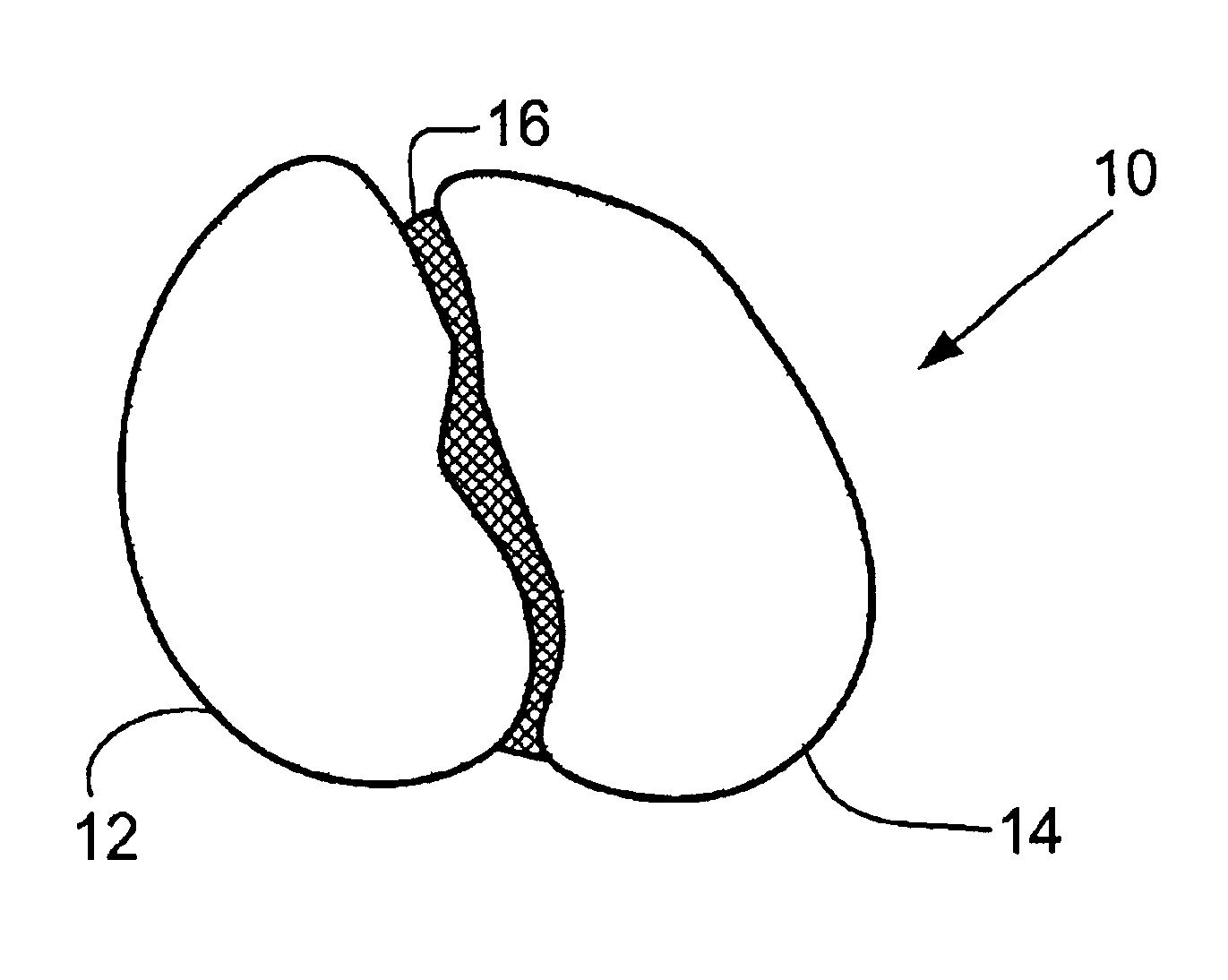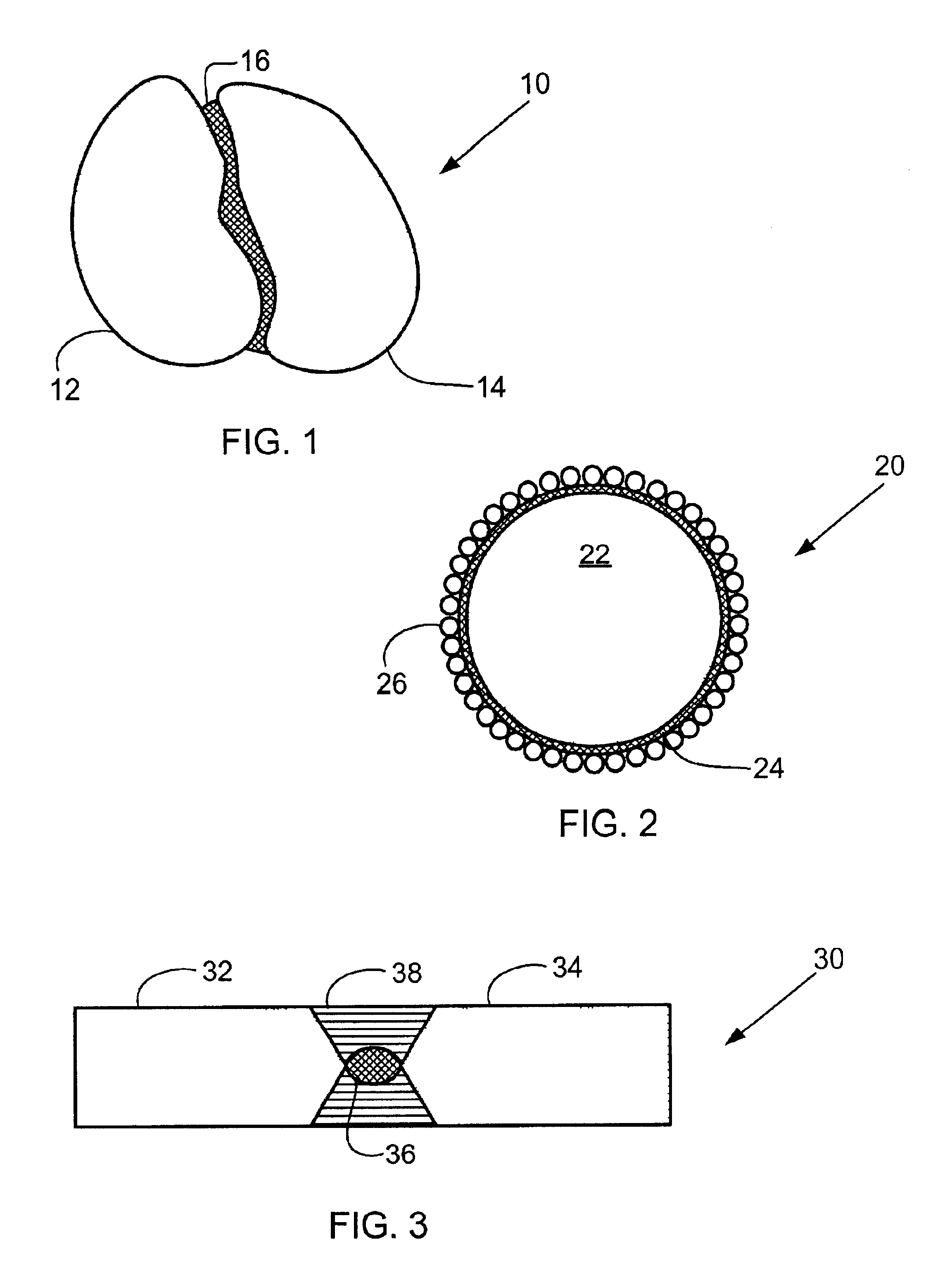Surface-enhanced spectroscopy-active sandwich nanoparticles
- Summary
- Abstract
- Description
- Claims
- Application Information
AI Technical Summary
Benefits of technology
Problems solved by technology
Method used
Image
Examples
Embodiment Construction
ucting an assay, ligands capable of associating with an analyte in solution are attached to the particles to form coated particles, and the coated particles are contacted with the solution. Typically, particles having different Raman spectra are attached to different ligands, which are capable of associating with different analytes.
BRIEF DESCRIPTION OF THE FIGURES
[0021]FIG. 1 is a schematic cross-sectional view of a SERS sandwich nanoparticle (SSN) of the present invention.
[0022]FIG. 2 is a schematic cross-sectional view of an alternative embodiment of a SSN having multiple sandwich structures.
[0023]FIG. 3 is a schematic cross-sectional view of an embodiment of a SSN having tipped outer regions.
[0024]FIG. 4 illustrates a self-assembled SSN having multiple outer regions.
[0025]FIG. 5 is a schematic perspective view of a preferred embodiment of a rod-shaped SSN of the present invention.
DETAILED DESCRIPTION OF THE INVENTION
[0026]The present invention is directed to surface enhanced spec...
PUM
 Login to View More
Login to View More Abstract
Description
Claims
Application Information
 Login to View More
Login to View More - R&D
- Intellectual Property
- Life Sciences
- Materials
- Tech Scout
- Unparalleled Data Quality
- Higher Quality Content
- 60% Fewer Hallucinations
Browse by: Latest US Patents, China's latest patents, Technical Efficacy Thesaurus, Application Domain, Technology Topic, Popular Technical Reports.
© 2025 PatSnap. All rights reserved.Legal|Privacy policy|Modern Slavery Act Transparency Statement|Sitemap|About US| Contact US: help@patsnap.com



